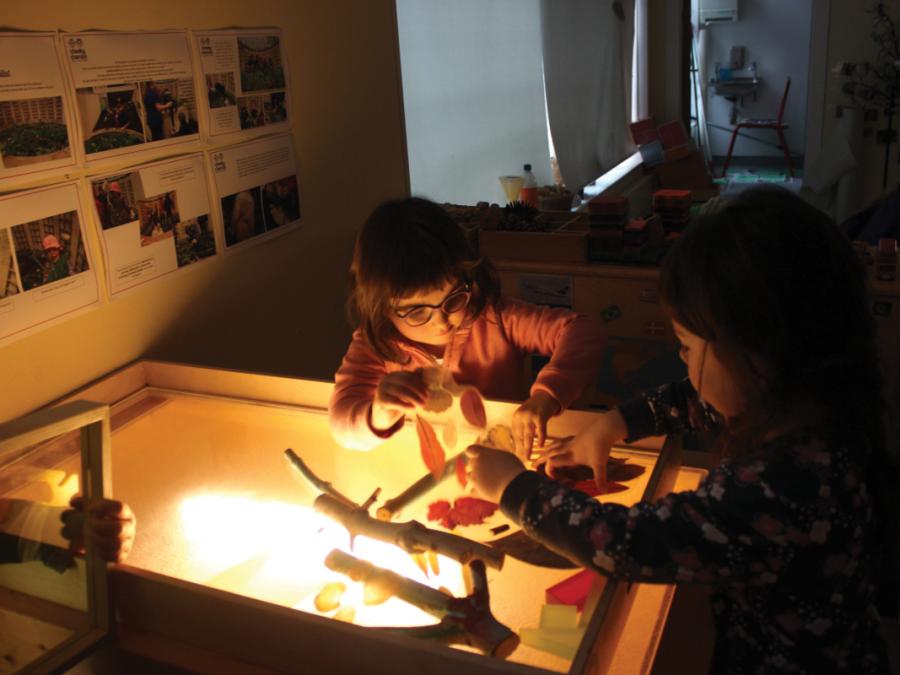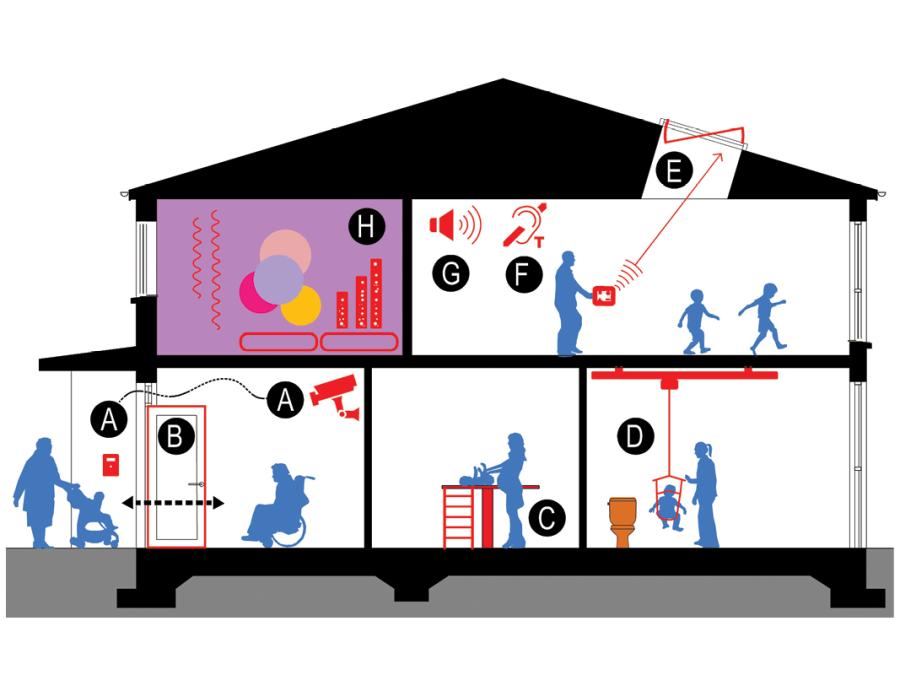Technology
Overall design considerations and awareness
Technology in the early learning and care setting may be used for safety and security, communication, or for multisensory stimulation or educational purposes.

35. Cheeky Cherubs, City Hall, Cork
Cheeky Cherubs, City Hall, Cork.
Design features
- Light table used to create relaxing multisensory space.
- A light table is a piece of equipment where there is a light source located under a translucent table top, enabling children to explore light, colour and natural materials in a multi-sensorial way.
Technology plays an important role within a Universally Designed ELC setting in terms of making the environment safe, accessible, understandable and easy to use for all children, staff, parents, and visitors. Bearing in mind the diversity of ELC users that occupy a setting, careful consideration should be given to the use of technology for all users regardless of age, size or disability.
An integrated approach to technology is important in all parts of the setting; from approaching, entering and circulating within the setting, down to the internal environment and fit-out elements. Technology is at the core of Assistive Technology for users with specific physical, sensory or cognitive needs, but it is also important for all ELC users in terms of safety and security, and for multisensory stimulation.
These aspects of technology within an ELC setting are illustrated in the Indicative Building Section below and they are briefly discussed in the subsections that follow.

Technical sketch 6: Indicative Building Section - Examples of Various technologies that can be used within a ELC setting
Examples of technology to support safety and security
A. Integrated access control, Intercom system and CCTV.
Examples of technology to support users with physical challenges
B. Power operated entrance door.
C. Power operated adjustable changing bench.
D. Ceiling or wall mounted hoist.
E. Power operated windows.
Examples of technology to support users with sensory challenges
F. Hearing enhancement system such as a Hearing Loop.
G. Audible information.
Examples of technology to support users with cognitive challenges
H. Sensory room that uses technology such as lighting or sound for multisensory stimulation. Further information on sensory rooms can be found on page 280.




